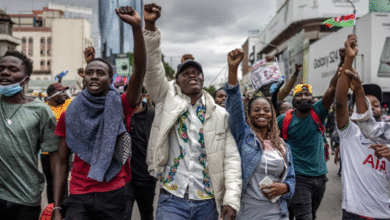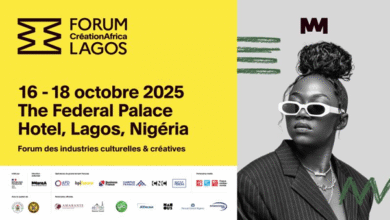Regional economic outlook for Africa : Africa driven by the rise of “Small Nations”
The latest report from the International Monetary Fund (IMF) highlights the rise of African “small nations” such as Rwanda, Uganda, Ethiopia, Benin, and Côte d’Ivoire, now among the fastest-growing economies on the continent. A new geography of African growth is emerging… Analysis.

The Regional Economic Outlook for Sub-Saharan Africa, published on October 16, 2025, in Washington, portrays an Africa reinventing itself. While large economies like Nigeria and South Africa struggle to recover, smaller countries—often considered “emerging” until recently—are now posting the continent’s strongest performance.
According to the IMF, the region’s average growth will reach 4.1% in 2025, with a modest acceleration expected in 2026. “Sub-Saharan Africa’s economic growth is expected to hold steady at 4.1% in 2025, with a modest pickup anticipated in 2026,” said Abebe Aemro Selassie, IMF Director for the Africa Department, during the report’s presentation in Washington.
This momentum, he adds, “reflects ongoing progress in macroeconomic stabilization and reform efforts in major economies.” In other words, reforms, fiscal discipline, and political will are what set these countries apart from their larger but less reform-minded peers.
The Success of Fiscal and Investment Policies
Rwanda, Uganda, Ethiopia, Benin, Côte d’Ivoire… these countries share a common approach: a well-managed macroeconomic framework, prudent debt management, and sustained investment in infrastructure and manufacturing.
“Several countries—Benin, Côte d’Ivoire, Ethiopia, Rwanda, and Uganda—are among the most dynamic economies in the world,” the report notes. This statement alone signals a shift: Africa’s vitality is no longer driven by demographic giants, but by smaller, reform-oriented, disciplined nations.
In Rwanda, good governance policies and the ambition to become a hub for services and innovation continue to bear fruit. Ethiopia, despite a challenging political context, continues its industrialization strategy and massive infrastructure investments. Côte d’Ivoire maintains its position as West Africa’s locomotive thanks to the revival of its agro-industrial sector and regained political stability. Benin, praised for tax reform and fiscal discipline, attracts new investors, while Uganda strengthens its regional competitiveness through sound monetary management.
“It is encouraging to see the region demonstrating remarkable resilience, although it will continue to face challenges in the months ahead,” Abebe Selassie emphasized. While performance is real, it remains fragile.
Persistent Challenges Despite Resilience
The IMF warns of multiple risks: rising public debt, persistent inflation, and an increasingly uncertain global environment. “Rising debt service reduces spending on development,” the report cautions, noting that higher debt costs shrink budget margins for social spending and productive investments.
Inflation, although declining at the regional level, remains above 10% in nearly one-fifth of countries. Additionally, international financing conditions remain tight, despite slight improvements. “External financing conditions have improved somewhat, allowing a few countries, notably Kenya and Angola, to access international capital markets,” the IMF notes. Yet these gains benefit only a minority.
Another concern is the deterioration of trade conditions and international aid. The end of certain preferential access to U.S. markets, notably under the African Growth and Opportunity Act (AGOA), weighs on exports. The report also notes a “sharp decline in foreign aid,” leaving the most fragile economies “particularly exposed.”
Two Priorities to Consolidate the Trajectory
The IMF emphasizes two key levers to anchor growth sustainably: increasing fiscal revenues and strengthening public debt management.
“There is significant potential for countries in the region to raise revenues through comprehensive tax reforms and improved tax administration,” Abebe Selassie highlights. He calls for modernizing tax systems, digitizing collection, and reducing inefficient tax expenditures, while “building public trust in tax institutions.”
Regarding debt, the institution advocates greater transparency and better fiscal oversight: “Enhancing debt transparency and strengthening public financial management can help reduce borrowing costs and unlock innovative financing.”
Since 2020, the IMF has injected nearly $69 billion into Sub-Saharan African economies, including about $4 billion in 2025, to support reforms and strengthen institutional capacities.
“Small Nations”: Key Symbols of a Changing Africa
In fact, the IMF confirms a turning point: African success is no longer the exclusive domain of large states. Today, it is the “small nations”—more agile, better governed, and more coherent in economic decision-making—that embody the continent’s emergence.
“These priorities are critical for building resilience and supporting inclusive and sustainable growth across Sub-Saharan Africa,” concludes Abebe Selassie.
Rwanda, Benin, Ethiopia, Côte d’Ivoire, and Uganda demonstrate that in Africa, the size of a country or its population matters less than the consistency of reforms, transparency, and economic discipline. Lessons that the continent’s “giants” would do well to heed.







